17 Jun 2019
Interview
EGLE ODDO: KNOWING THE LAND, PALM BY PALM
Finland-based Italian artist, plant seed enthusiast Egle Oddo was a resident at HIAP between August and October 2018. For the first month of the residency, Egle had her own two-floor studio in the HIAP studio building. The studio’s architectural elements allowed for a very interesting work space: the working space is downstairs and has extremely high ceilings, while the bedroom is upstairs, and with its wooden ceilings and wooden floors is almost like a nest. “The interesting architecture made me realise how important space is in developing artistic thinking,” Egle tells us.
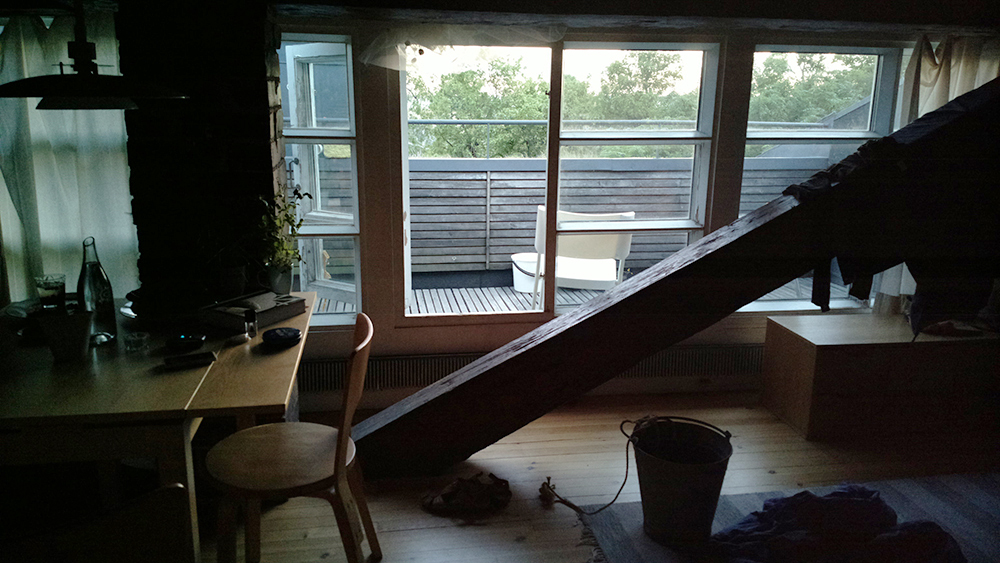
Egle nesting during her residency at HIAP, Helsinki 2018. Photo Egle Oddo
This architectural thinking space became even more obvious during the latter part of Egle’s residency, during which she was given her own space within Gallery Augusta in which to do scientific research. Egle took the chance to transform the gallery into a studio/living space, in which she built her own bed and living area; her own space within a space, within which she lived for two months. Gallery Augusta is very big and lofty, and the free space above and around Egle allowed her thinking to develop freely and allowed her to consider her work in new, surprising ways.
Utricularia australis and understanding plants through sensual experimentation
During those months, Egle was building small objects, creating performative work and also collecting seeds from the island. On one of her many walks collecting seeds, she made an extraordinary discovery. In an artificial little pond, Egle found a type of yellow flowers which she had not previously noticed in her fifteen years of living in Finland. She found the flowers very intriguing and started looking at them and photographing them. In a performance, Egle took a bath in the little flower-filled pond; she lay there bathing, completely surrounded by these small, yellow flowers. In the pond, she could hear a drone-like sound, formed by many tiny continuous clicks.
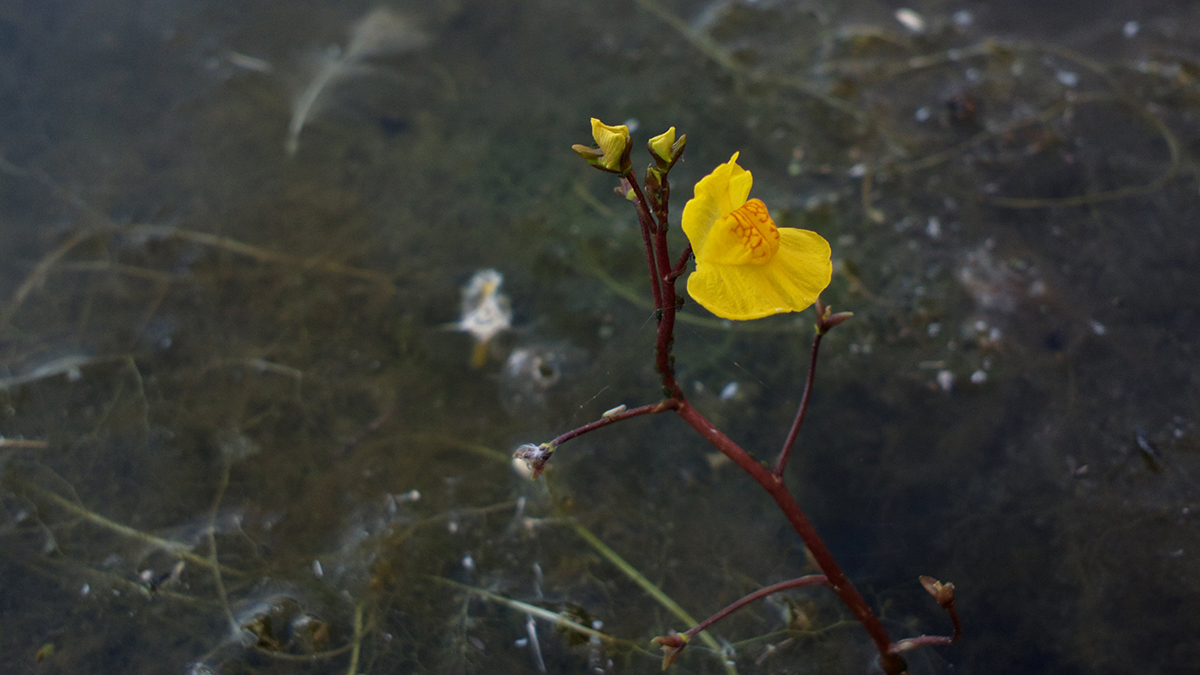
Egle meets Utricularia Australis, Suomenlinna 2018. Photo Egle Oddo
Later, Egle consulted a botanist collaborator, who told her that she had actually made an exciting discovery. The flower is called Utricularia australis and it is, as the name suggests, original to Australia. It occurs these days in Southern Europe, but it does not appear in Finland in such massive populations as in Suomenlinna during summer 2018. Because of the nature of Suomenlinna, with merchant and other ships travelling through it, it is rich in seeds which are not to be found anywhere else in Finland. Utricularia australis is a carnivorous plant, and the clicking sound Egle could hear while lying in the pond, was actually the sound of the plant feeding on insects.
The discovery was extremely interesting to Egle. In her work, as she tells us, she tries to firstly understand plants through a botanical point of view, then afterwards, as an artist she tries to follow her intuition beyond natural sciences. Natural sciences inevitably create hierarchies of species and of subspecies, and while it is important knowledge in order to approach and understand various phenomena, it is equally important to experience the phenomena sensually. As well as lying in a pond with the flower slowly eating, she took the sensual experimentation further: she collected the plant and took it home, then drank the water filtered by it in the hopes of understanding the plant through her own body. The results of this experimentation are not measurable in scientific ways: “I cannot say that my person was changed by this experience, but I cannot say that it didn’t,” Egle laughs.
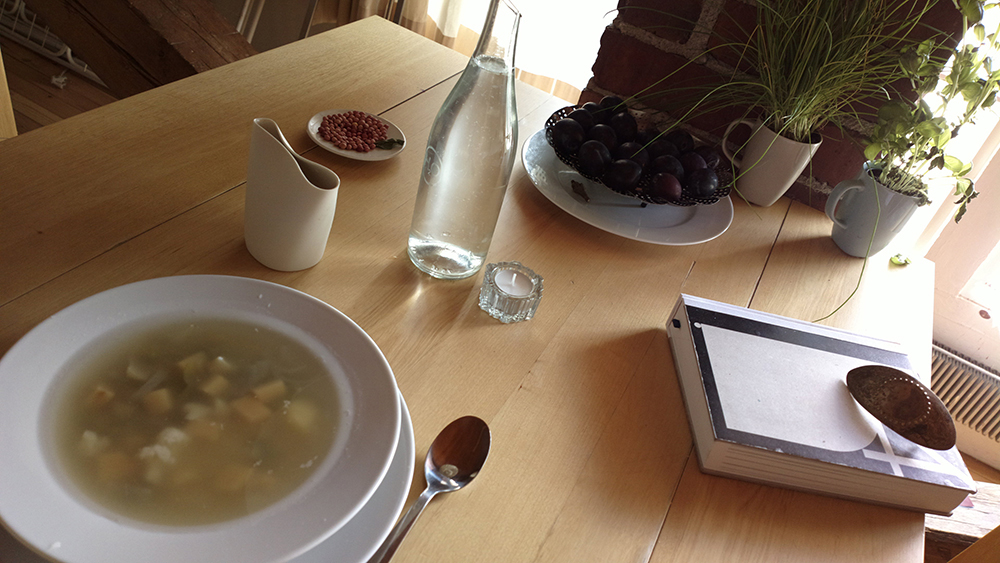
Egle dining with Urticularia Australis filtered water during her residency at HIAP, Helsinki 2018. Photo Egle Oddo
Seeds in urban environments
During her stay in Gallery Augusta, Egle was also able to read, write and prepare an article on the copyright of seeds. The part of the plant Egle is most interested in, is indeed the seed. The main reason for her interest, is that we don’t see many seeds in an urban environment. In a city, seeds cannot be collected or planted. We can buy seeds in shops, but they have been cultivated and selected based on certain criteria; there isn’t much left to chance. When Egle plants seeds she collects them from plants herself together with specialists who help her identify the plants; she creates gardens, living sculptures which she calls “evolutive gardens.” She plants seeds and follows their growth for about three years; after, she just lets them be. She asks the town hall not to interfere with their growth or trim them, but instead to let the plants interact with each other and with the insects autonomously.
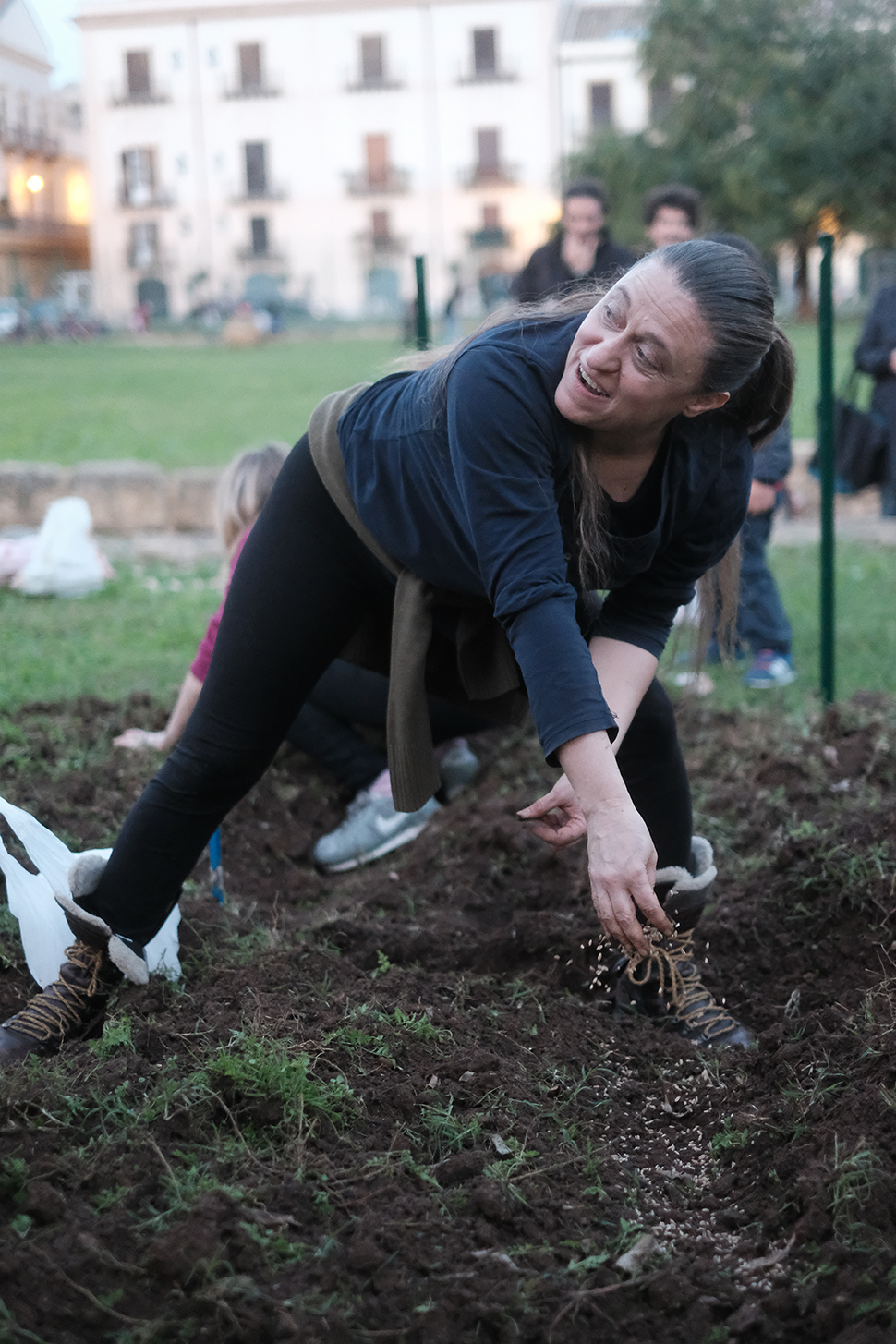
Egle Oddo’s evolutive garden at Manifesta12, Piazza Magione 2018. Photo Timo Tuhkanen
With these interventions Egle wants to bring seeds closer to people. Seeds are so tiny and insignificant-looking, they are almost invisible. Egle’s aim with these interventions is to magnify the presence of the seeds and solve this problem of their absence from the urban environment. “We are not autonomous in choosing what to grow in cities, we do not take initiatives,” Egle sighs. But it is possible to have guidelines, and the help of experts in choosing what to plant and grow, avoiding the introduction of invasive species, something that the city planners of the landscape departments are often very concerned with. “Such an overestimation of what might happen,” Egle laughs.
Instead, she believes that more autonomy would help enrich the biosphere in cities, which would be not only a political act, but also a social activation. It is the responsibility of each individual to think of what it means to have a relationship with plants, since we need them in everything we do. This is, therefore, the core of Egle’s practice: the exploration of the absence of seeds from urban environments, the introduction of seeds to such environments, and seeing what happens between the seeds and people.
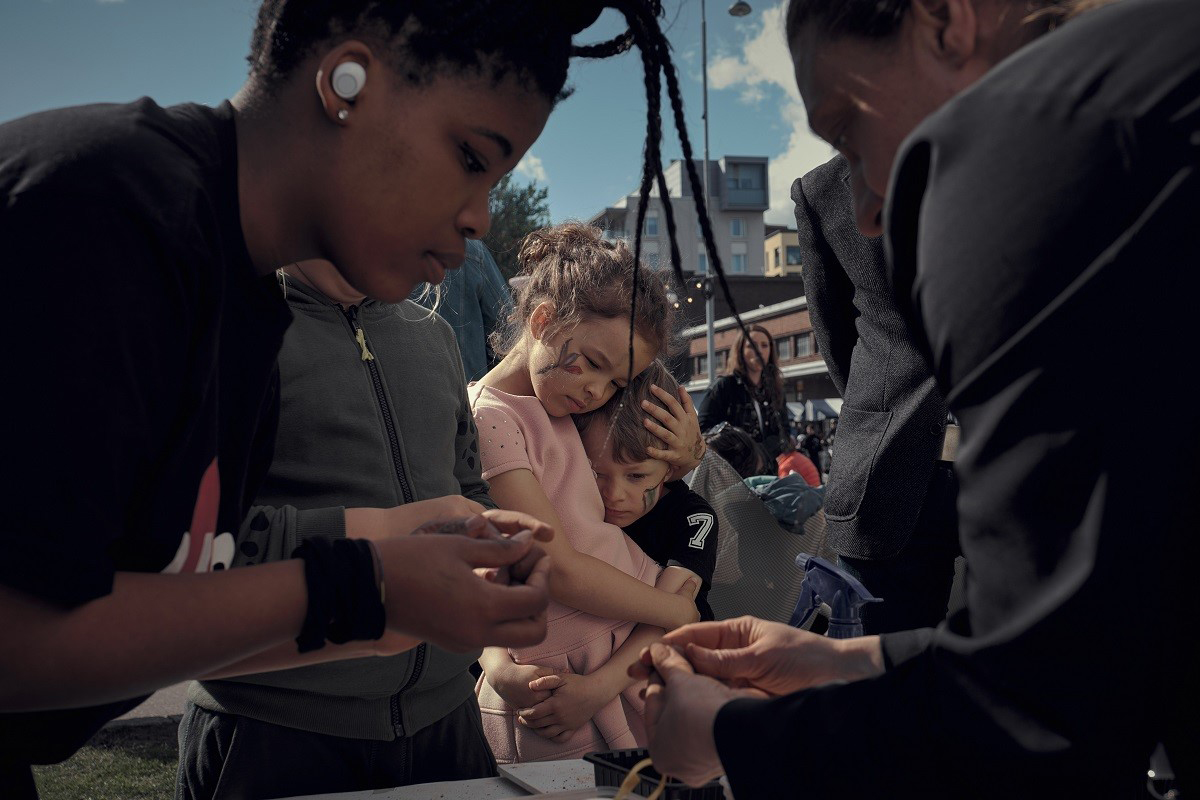
Seeds Bombs Kill Only Boring Gardens, a participatory performance series by Egle Oddo, Helsinki 2019. Photo Krisztián Kósa
The CrossSections project in Tunisia with Basak Senova and the Kamel Lazaar Foundation
Egle has been exploring these topics for many years in Finland, where the social, political and economic situation is rather stable, but also in Italy, Gambia and more recently Tunisia. Egle’s residency at HIAP was partially motivated by her involvement in the CrossSections project, which was initiated by Basak Senova in 2017. Thanks to curator Basak Senova and the CrossSections project, Egle was asked in 2018 to transform a small plot of land near the Kamel Lazaar Foundation in Tunisia and to imagine a possible project around it. This plot of land was initially described to her as insignificant, dirty and problematic. Some olive trees were said to be struggling, and some herbs were scattered around. Egle was informed that the land is actually a little below sea level, so occasionally salty water rises to the plot, making it a challenging environment for most plants.
Without actually having visited the plot yet, Egle started to study the flora of Tunisia and especially that region. She discovered that the plot had a very interesting potential to grow extremophiles, plants that like extreme conditions such as too much water, no water, heavy metals, pollution, rocky biotopes, high salinity and so on; basically, any condition that would be too problematic for most other plants. After instructing the Kamel Lazaar Foundation not to touch the plot, Egle then contacted “Centre de Biotechnologie” at the Technopole of Borj Cédria. With the help of their specialist in extremophiles, Karim Ben Hamed, Egle found that halophytes, plants that can deal with high salinity, would be the best candidate among extremophiles to be introduced ex-situ in the garden.
Egle’s first visit to Tunisia was inspiring and very welcoming: Karim Ben Hamed had arranged for Egle to meet with several researchers and botanists as well as with the director of the Technopole, with whom they immediately started planning and building up common goals. However, when Egle and Karim went to see the plot, they found that her instructions to leave the area untouched had not been followed, and the Kamel Lazaar Foundation in the attempt to block out the salt from the original soil, had flooded the plot with clay-based soil, full with debris. The precious possibility for halophytes was deleted except for a small triangle of land, which Egle immediately protected. As saddened as Egle was to see what had happened, it also made her believe even more strongly in the need for her practice: the lack of interest for understanding plants beyond their immediate functional performance for humans makes people overlook some plants in favor of others. Especially those plants which are not beautiful, or edible, or useful to humans tend to be thought of as unwanted weeds. What had happened was meant as an act of kindness; the Kamel Lazaar Foundation meant to be helpful in fixing the plot for Egle to better grow a garden.
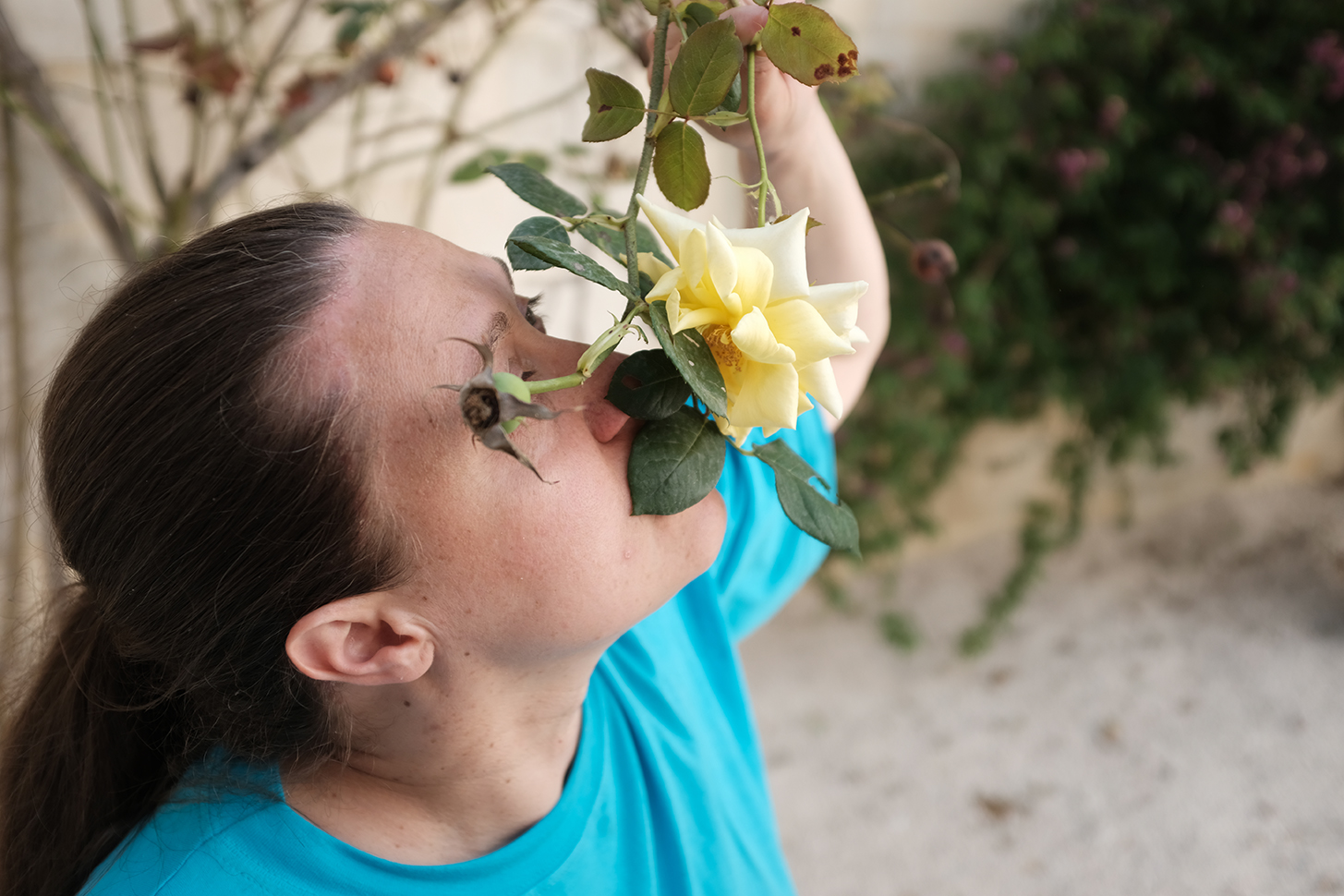
Egle Oddo during her residency at Fondazione Orestiadi, Gibellina 2018. Photo Antti Ahonen
After the initial surprise, Egle and Karim proceeded to take samples of the soil and the water in the area, from the little untouched corner as well as nearby areas in order to see the species that grow there and to understand the biotope. In the end, Egle has now come up with a new plan, taking in account the day to day operations of the Foundation: as the garden will also be used by the Foundation as an area for convivial events, she has proposed to plant a selection of cultivars and wild plants that represent the local flora in the border of the garden, and halophytes in the untouched corner. In another plot next to the original garden, she will plant more halophytes.
The plans are under negotiation, and Egle has been invited to go back in September to collect seeds from the wild. Such is the nature of her work, that she cannot rush things, she has to follow the pace of seasons. Egle also likes a direct approach in working the land. “Palm by palm,” she says, “that’s how you know the land.” She does not use machines either but prefers to use all her senses equally when working.
As well as the CrossSections project in Tunisia with Basak Senova and the Kamel Lazaar Foundation, Egle is also making an evolutive garden in Italy, working with seeds of progenitors of brassicas, which are native to Sicily.
Egle values the time she spent at HIAP and Gallery Augusta, as a time during which ideas were allowed to develop. “The residency opened my thoughts and gave me the possibility to bring forward the project in a way I did not expect,” she discusses. “Even though a lot of the time spent at the residency was seemingly uneventful, the current projects were growing and cooking in my head.”
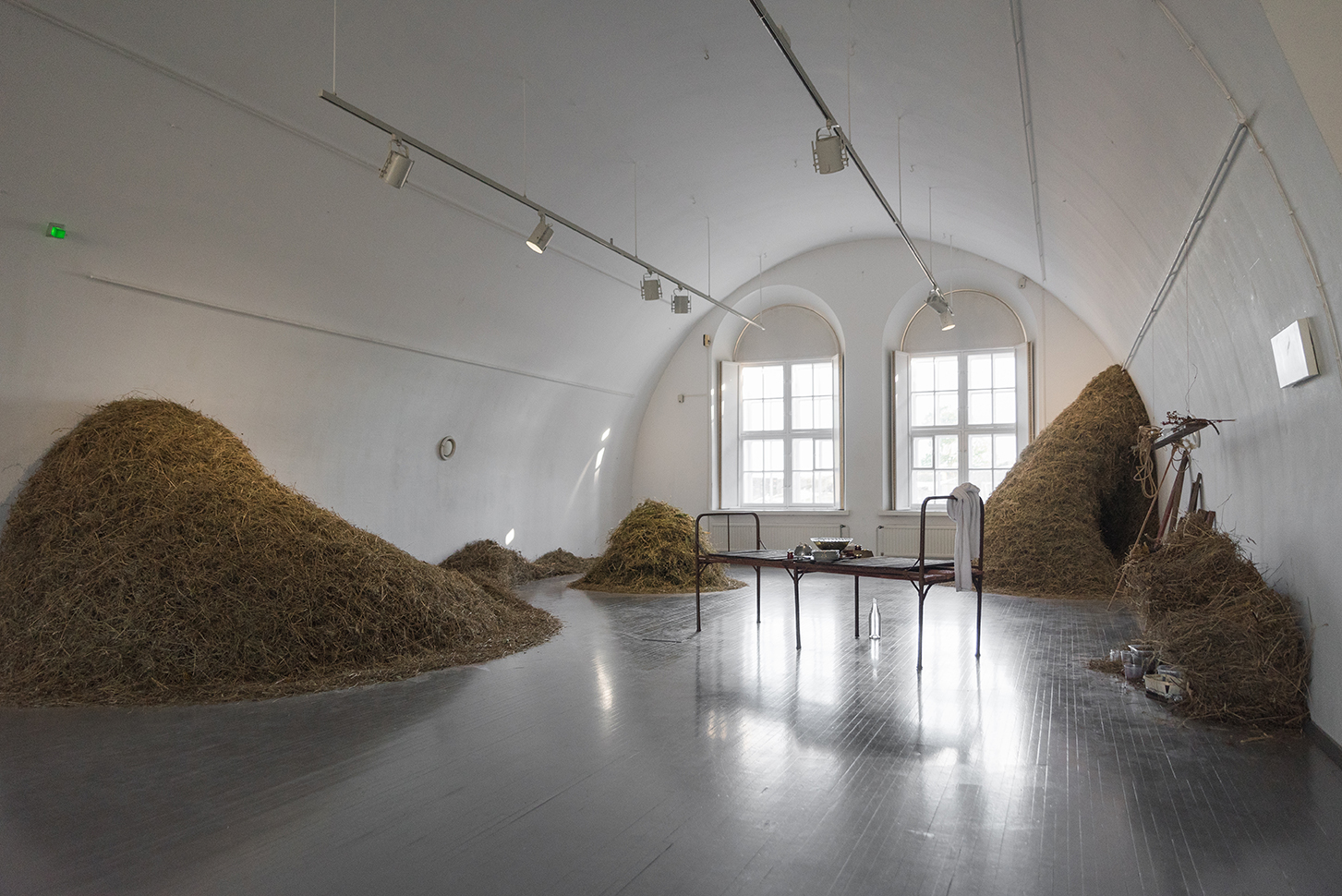
Egle Oddo’s installation in Augusta during Hiap Open Studios, Helsinki 2018. Photo Antti Ahonen
The CrossSections project has been developed and curated by Basak Senova. Over the the course of three years (2017–2019), with the participation of 19 artists, diverse scholars and cultural workers, various meetings, workshops, exhibitions, performances, talks and book launches are being held in three cities: Vienna, Helsinki, and Stockholm. The partners of the project are Kunsthalle Exnergasse – WUK (Werkstätten und Kulturhaus) in Vienna; iaspis – the Swedish Arts Grants Committee’s International Programme for Visual and Applied Artists, Konstfack University College of Arts, Crafts and Design, and NFK – The Nordic Art Association in Stockholm; Nya Småland in different locations in Sweden; HIAP – Helsinki International Artist Programme and Academy of Fine Arts – University of the Arts Helsinki in Helsinki; Center for Contemporary Arts, Estonia in Tallinn; and Press to Exit Project Space in Skopje.
Read more:
